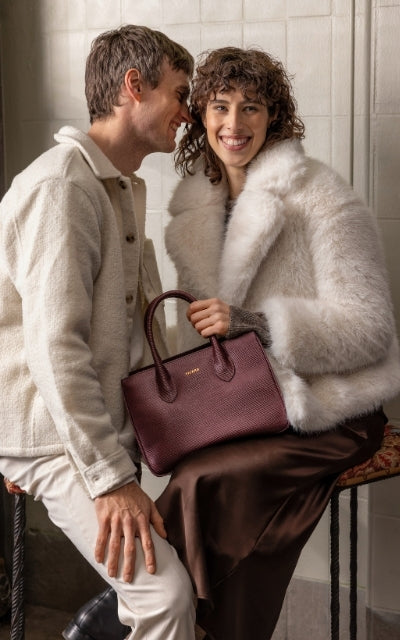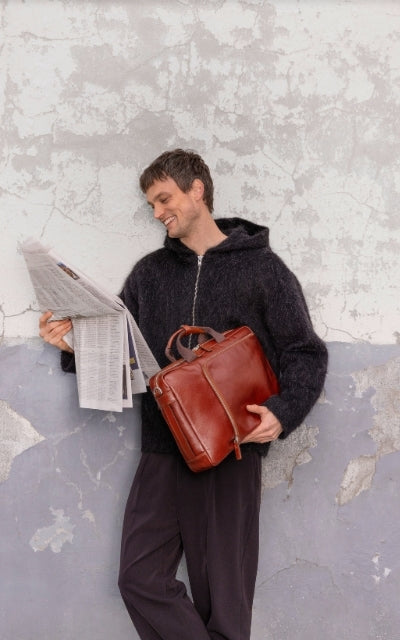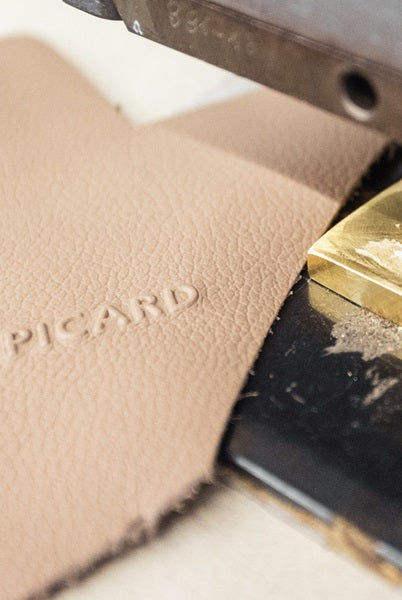In the cold, damp season, you should not only waterproof your leather bag but also your shoes and other leather products. But waterproofing also provides reliable protection against UV rays, dirt, cold and other environmental influences during the rest of the year.
Leather bags, leather shoes, backpacks and other everyday leather items should be cleaned regularly and protected with a waterproofing spray .
It is important to make sure you choose the right waterproofing spray for your leather. A suede bag should not be waterproofed with a waterproofing spray for smooth leather.
Waterproofing leather is really no big deal, so to ensure that you do it perfectly, we have put together this ultimate guide for you.

Why should you waterproof leather?
Leather is a robust natural product with fantastic properties. Resistance and durability are just a few of its fascinating characteristics.
But leather is also an organic material which, without proper protection, is exposed to environmental influences such as cold, UV radiation, moisture and dirt.
The leather doesn't like that in the long run and it will show that.
Moisture can leave unsightly water stains , and UV radiation can bleach the leather and make it brittle .
Dirt tends to settle in the pores of the leather , which can lead to greasy leather , and snow tends to leave white marks.
For this reason, you should definitely waterproof your favorite leather before wearing it for the first time and refresh this protection again and again.
In the text we will tell you how often you should waterproof your leather and what else you should consider.
Do all types of leather need to be waterproofed?
Yes, we recommend that you waterproof all of your leather items . However, you must select the appropriate waterproofing spray for each type of leather.
Suede, nubuck or suede leather types require a different waterproofing spray than smooth leather.
Does smooth leather need to be impregnated? Although smooth leather is naturally more robust and Suede Additional protection may be useful. For this reason, there are special protective sprays for this type of leather.
For smooth leather, you can also use leather wax , which protects and cares for the leather at the same time.
Please note that there are many different types of smooth leather and not all smooth leather can tolerate leather wax or leather grease .
Expert knowledge: Matt smooth leather should never be treated with leather grease or leather wax , as this will cause it to lose its matt appearance. You can also impregnate open-pored smooth leather with leather milk.
Imitation leather does not require impregnation because imitation leather is made from PVC or polyurethane and a textile fabric.
The PVC or polyurethane layer is water-repellent, so simply drying it off after a rain shower is sufficient.

Impregnating leather: step by step
Your new leather bag is just waiting to go out with you, but it does n't have the right dress code yet.
Before you can go out and about, you should waterproof your new leather bag.
We'll explain exactly how this works here.
- Spray the leather evenly and over a large area from a distance of about 30 cm . The leather should not become too wet.
It is best to spray the waterproofing spray in the fresh air so that you do not inhale the spray and your home does not smell of it.
- Now let the waterproofing spray work for about 20 minutes and repeat the process two to three times.
- For optimal protection, the leather should rest for 24 hours and the waterproofing spray should fully develop
If you want to waterproof leather that you have already worn, you should always clean it first.
Then you can proceed as described above.
How to properly waterproof leather: 5 tips
For a quick overview, we have summarized the five most important tips for waterproofing leather.
-
New leather - waterproof immediately
Before your leather accompanies you, you should give it a 24-hour acclimation period.
Impregnate the leather and let it rest for at least 24 hours.
-
Fresh air - waterproof the leather in the fresh air
In order to protect your nasal mucous membranes and to avoid having the scent of the waterproofing spray throughout your apartment, it is advisable to waterproof the leather outdoors.
-
Determine the type of leather - choose the right waterproofing spray
You can usually buy the right waterproofing spray directly from the retailer . Get advice on which care product is right for your leather.
-
Leather milk an alternative - for suede and open-pored smooth leather
For suede and open-pored smooth leather, you can use leather care milk as an alternative to waterproofing spray .
Make sure that it is suitable for these types of leather . The leather care milk is applied to the leather with a cloth.
-
Cleaning - before impregnation
You should always remove dust and dirt from leather that you have already used before waterproofing it.
Then spray the spray evenly and over a large area and let it sit for 24 hours.

How often does leather need to be waterproofed?
This depends a little on usage. You should waterproof shoes regularly every 2-8 weeks .
However, if you have been hiking through snow, rain and ice, you should waterproof your shoes after they have dried.
As a golden rule, waterproofing every 3-6 months is sufficient. Unless your leather is subject to heavy wear, then you should waterproof it more often.
How do I avoid white spots after waterproofing?
These stains often occur when the waterproofing spray is not suitable for the leather.
These stains can also occur if you spray the waterproofing spray from too close a distance.
Naturally waterproofing leather: Are there suitable household remedies?
You will certainly find some tips on the Internet about how to waterproof your leather using household remedies. However, we would strongly advise against using household remedies here.
Conclusion
Impregnation is an important care measure for leather products to protect them from the harmful effects of moisture, UV radiation, cold and dirt.
It is crucial to choose the right waterproofing spray for each type of leather, as suede and smooth leather, for example, require different care.
The process of waterproofing is simple: the leather is sprayed evenly with the spray, left to dry in the fresh air and ideally repeated several times.
The impregnation should be renewed regularly every few months, depending on the wear and tear of the leather.
It is advisable to avoid using suitable home remedies for waterproofing , as these may not provide the desired protection and may even cause stains.
FAQ
What can you use instead of waterproofing spray?
Using candle or beeswax as a waterproofing agent is an alternative method that can be effective on some types of leather, especially smooth leather.
By applying a thin layer of melted wax to the leather and then allowing it to harden, it forms a protective layer against moisture. It is important to spread the wax thoroughly and evenly to avoid staining.
Can you waterproof a couch?
Yes, you can waterproof a couch.
The impregnation of the sofa cover offers additional protection against dirt and stains.
The special coating makes the fabric water and dirt repellent, which means that dirt particles cannot penetrate the fabric so easily.
Before waterproofing the sofa, it is advisable to clean the sofa cover thoroughly to ensure that no dirt or stains are trapped.
The impregnation works best on clean and dry fabric.
Find out more by reading our other articles:








